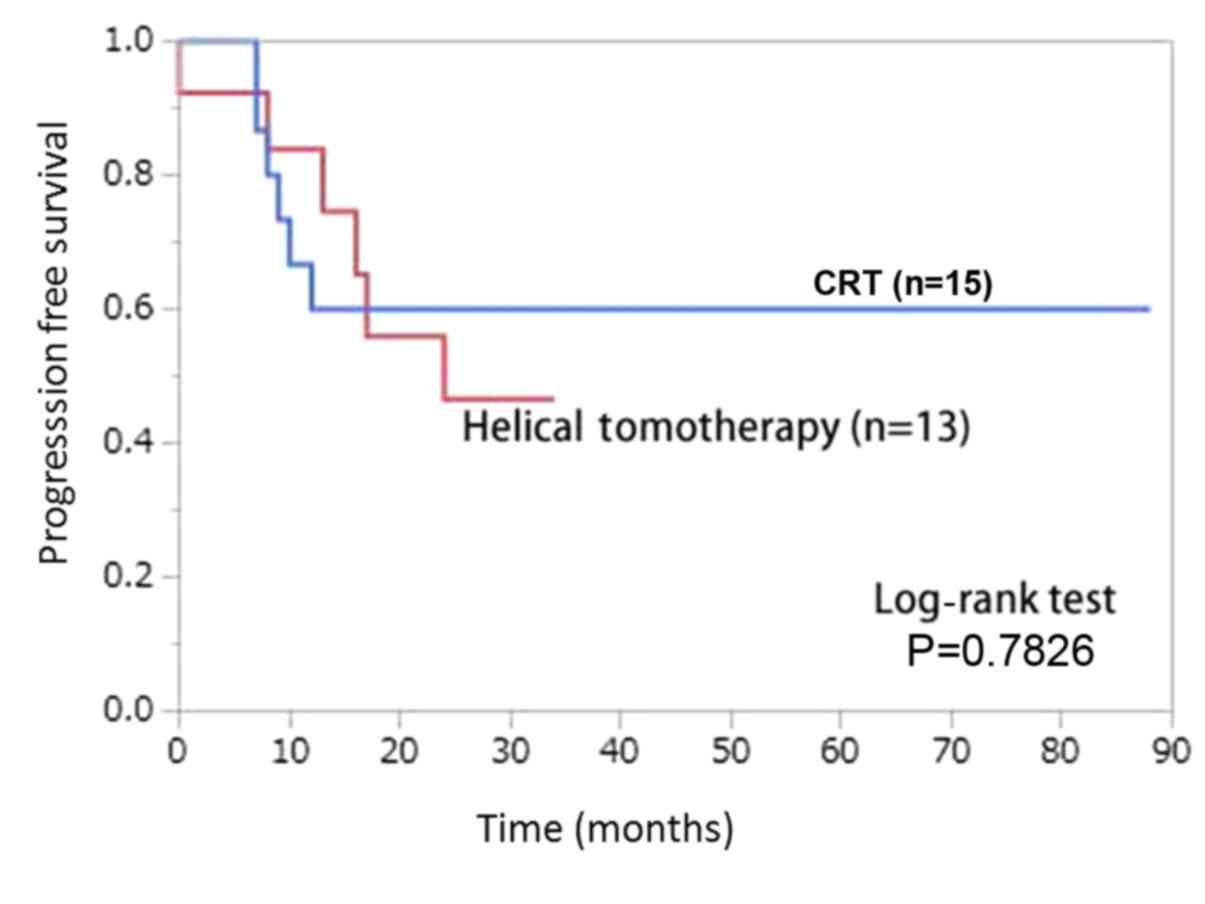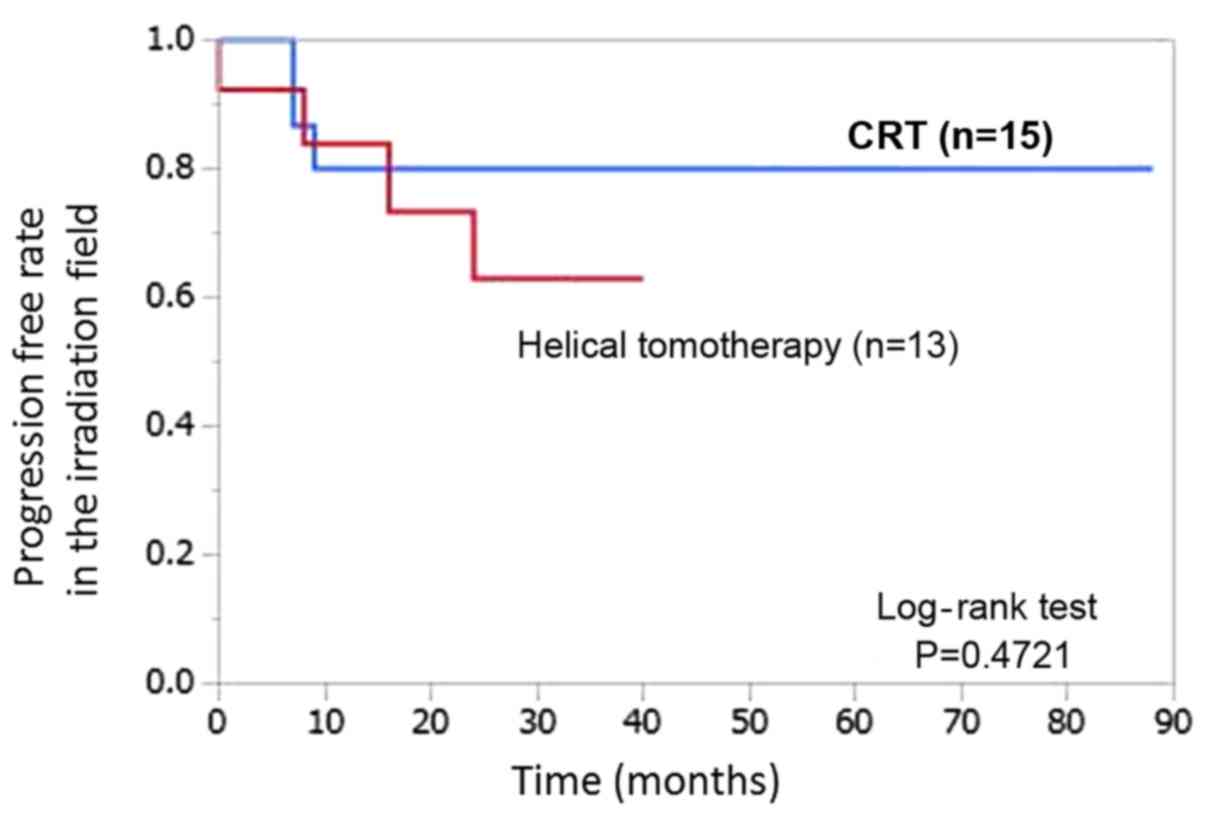Short term outcomes of helical tomotherapy during concurrent chemoradiotherapy for advanced cervical cancer
- Authors:
- Published online on: January 23, 2019 https://doi.org/10.3892/mco.2019.1806
- Pages: 382-386
Metrics: Total
Views: 0 (Spandidos Publications: | PMC Statistics: )
Total PDF Downloads: 0 (Spandidos Publications: | PMC Statistics: )
Abstract
The aim of the present study was to clarify the feasibility and efficacy of helical tomotherapy during concurrent chemoradiotherapy for treating cervical cancer. The medical records of 13 patients who underwent oncurrent chemoradiotherapy using helical tomotherapy for cervical cancer at Wakayama Medical University Hospital between 2013 and 2015 were retrospectively reviewed. A total of 15 patients who underwent oncurrent chemoradiotherapy using conventional radiotherapy (CRT) between 2008 and 2013 at our institution were also examined for comparison. The median age of patients treated with helical tomotherapy was 60 (range, 35‑71), and the median age of patients treated with CRT was 57 (range, 43‑77). The median follow‑up period was 27 months (range, 3‑46) in the tomotherapy group and 35 months (range, 7‑88) in the CRT group. The frequency of G3/4 thrombocytopenia in the tomotherapy group was significantly higher than that in the CRT group (P=0.049). However, the platelet count spontaneously recovered without transfusion. There were no significant differences between the groups in terms of frequency of G3/4 neutropenia, diarrhea or late intestine injury. The rate of complete response in the tomotherapy group and the CRT group was 84.6 and 73.3%, respectively, and there was no significant difference in the response rate between the groups. There were no significant differences in the progression‑free survival or progression‑free rate in the irradiation field between the groups. Adverse events from concurrent chemoradiotherapy using helical tomotherapy were acceptable and clinically controllable. The present results suggest that helical tomotherapy is efficient during concurrent chemoradiotherapy for treatment of advanced cervical cancer.











